2 Methods to Enable/Disable Presentation settings in Windows 10
The Presentation mode in Windows 10 is designed to help the users with portable devices. When the Presentation mode is active, it will apply some advanced changes to the operating system’s configuration. The Presentation settings are used to configure these advanced changes to the operating system. Users can turn off the screen saver, set the volume, and choose a specific background for the desktop in these settings. An administrator can choose specific settings and disable the Presentation settings feature for other standard users.

In this article, you will learn about how to enable or disable the Presentation settings in Windows 10. You can use different methods to configure the Presentation settings option.
1. Using the Local Group Policy Editor
The Local Group Policy Editor is a Windows tool that helps administrators in configuring different advanced settings for the users. This can be used to enable and disable the Presentation settings. The Local Group Policy Editor is only available in the Windows 10 Pro, Enterprise, and Education editions. If you are using a Windows 10 Home edition, then skip this method.
The setting can be found under both Computer Configuration and User Configuration categories. In our method, we will be using the one under the Computer Configuration. The path will be the same, only the categories will be different.
- Open the Run command box by pressing the Windows and R keys together on the keyboard. Now, just type “gpedit.msc” in the box and press the Enter key to open the Local Group Policy Editor window.

Opening the Local Group Policy Editor - Navigate to the specific setting by following the given path:
Computer Configuration\ Administrative Templates\ Windows Components\ Presentation Settings\
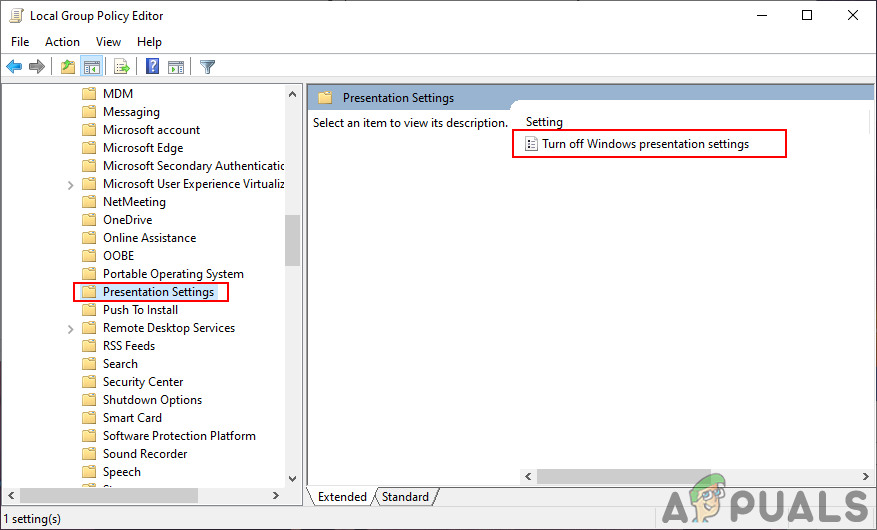
Navigate to the setting - Double-click on the setting named “Turn off Windows presentation settings” and it will open up in another window. Now you need to select the Enabled toggle option as shown.
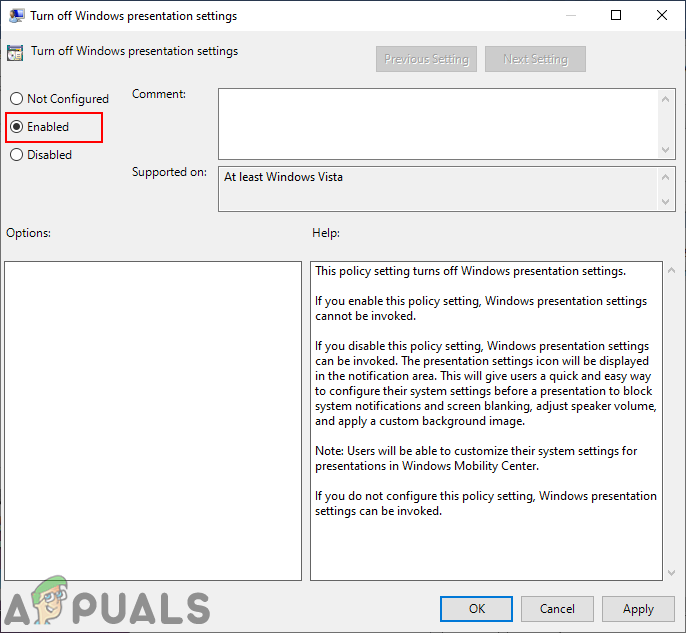
Enabling the Setting - Click on the Apply/Ok button and close the Local Group Policy Editor window.
- If this doesn’t update instantly, then you need to force update the group policy.
- Search for the Command Prompt through the Windows search feature and open it as an administrator. Now type the following command in it and press the Enter key.
gpupdate /force

Force update the group policy Note: You can also force update the policy settings by restarting the computer.
- You can always enable it back by changing the toggle option back to Not Configured or Disabled.
2. Using the Registry Editor
Another alternative method is by using the Registry Editor. It can be used to configure the same settings as in the Group Policy Editor. You need to create a value in a specific key of the Registry to enable or disable the Presentation settings through Registry Editor. In addition, if you already used the Group Policy Editor before this method, then the value will already be existing.
The value can be created under both the Current User and Current Machine hives. The path will be same, only the hives will be different.
- First, open the Run dialog box by pressing the Windows + R keys together on your keyboard. Then type “regedit” in the box and press the Enter key to open the Registry Editor window.
Note: If you receive a UAC (User Account Control) prompt, then choose the Yes option.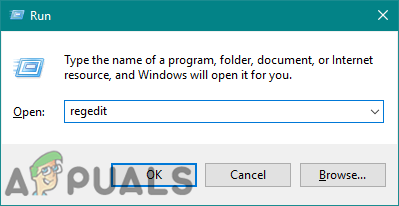
Opening the Registry Editor - You can also create a backup by clicking on the File menu in the menu bar and choosing the Export option. Then provide the name/path and click on the Save button.
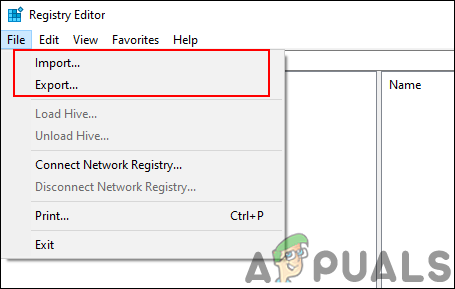
Creating a Registry backup Note: You can restore the backup by clicking on the File menu in the menu bar and choosing the Import option.
- In the Registry Editor window, head over to the following location:
HKEY_LOCAL_MACHINE\SOFTWARE\Microsoft\Windows\CurrentVersion\Policies\PresentationSettings
Note: If the PresentationSettings key is missing the path, then right-click on the Policies key and choose the New > Key option. Name the key as “PresentationSettings” and save it.
- Right-click on the right pane of the PresentationSettings key and choose the New > DWORD (32-bit) Value option. Rename the value as “NoPresentationSettings” and save it.
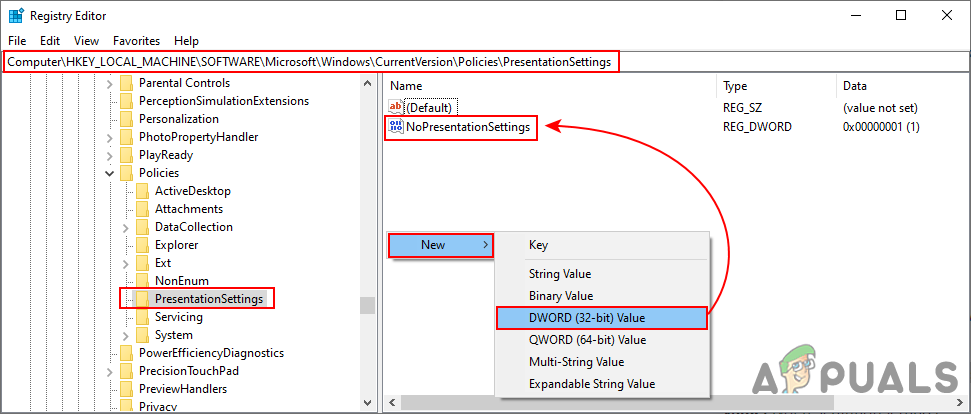
Creating a new value - Now double-click on the NoPresentationSettings value to open the value data dialog. Then change the value data to 1.

Changing the value data - Click on the Ok button and close the Registry Editor window. Make sure you restart the computer to apply these new changes.
- You can always enable it back by changing the value data to 0. Another way to enable this is by removing the value from the Registry Editor.





